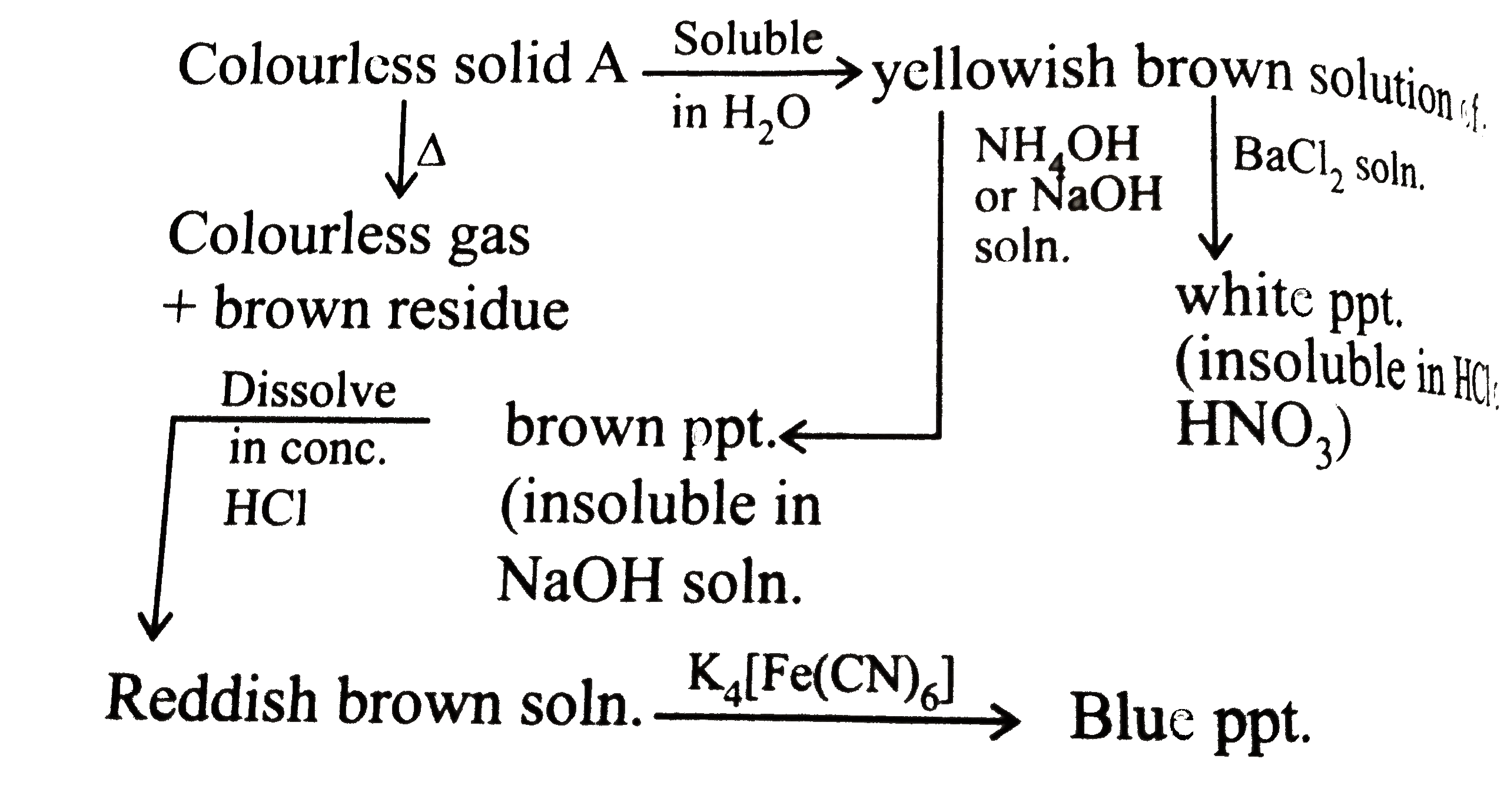Ozone reacts with K4Fe(CN)6 to form
Fe2O3
Fe(OH)3
Fe(OH)2
K3Fe(CN)6
The correct Answer is:D
To solve the problem of what ozone reacts with potassium ferrocyanide (K₄(Fe(CN)₆)) to form, we can follow these steps:
Step 1: Identify the Reactants
We have two reactants in this reaction:
- Ozone (O₃)
- Potassium ferrocyanide (K₄(Fe(CN)₆))
Step 2: Understand the Nature of Ozone
Ozone is known to be a strong oxidizing agent. This means that it can cause oxidation reactions, where it increases the oxidation state of certain elements in compounds.
Step 3: Determine the Oxidation State Changes
In potassium ferrocyanide, iron (Fe) is in the +2 oxidation state. When ozone reacts with it, it oxidizes the iron to a +3 oxidation state, resulting in potassium ferricyanide (K₃(Fe(CN)₆)).
Step 4: Write the Reaction
The reaction can be represented as follows:
O3+K4(Fe(CN)6)+H2O→K3(Fe(CN)6)+O2+KOH
Step 5: Balance the Reaction
To balance the reaction, we can multiply the coefficients:
- Multiply K₄(Fe(CN)₆) by 2 to balance the potassium and iron atoms.
- The balanced reaction becomes:
2O3+2K4(Fe(CN)6)+2H2O→2K3(Fe(CN)6)+2O2+2KOH
Step 6: Identify the Product
From the balanced reaction, we can see that the main product formed is potassium ferricyanide (K₃(Fe(CN)₆)).
Conclusion
Thus, when ozone reacts with potassium ferrocyanide, it forms potassium ferricyanide along with oxygen and potassium hydroxide.
Final Answer
The product formed is K₃(Fe(CN)₆) (potassium ferricyanide).
---
We have two reactants in this reaction:
- Ozone (O₃)
- Potassium ferrocyanide (K₄(Fe(CN)₆))
Ozone is known to be a strong oxidizing agent. This means that it can cause oxidation reactions, where it increases the oxidation state of certain elements in compounds.
In potassium ferrocyanide, iron (Fe) is in the +2 oxidation state. When ozone reacts with it, it oxidizes the iron to a +3 oxidation state, resulting in potassium ferricyanide (K₃(Fe(CN)₆)).
The reaction can be represented as follows:
O3+K4(Fe(CN)6)+H2O→K3(Fe(CN)6)+O2+KOH
To balance the reaction, we can multiply the coefficients:
- Multiply K₄(Fe(CN)₆) by 2 to balance the potassium and iron atoms.
- The balanced reaction becomes:
2O3+2K4(Fe(CN)6)+2H2O→2K3(Fe(CN)6)+2O2+2KOH
From the balanced reaction, we can see that the main product formed is potassium ferricyanide (K₃(Fe(CN)₆)).
Thus, when ozone reacts with potassium ferrocyanide, it forms potassium ferricyanide along with oxygen and potassium hydroxide.
The product formed is K₃(Fe(CN)₆) (potassium ferricyanide).
Topper's Solved these Questions
- P-BLOCK GROUP 16 ELEMENTS - THE OXYGEN FAMILYBOOK - CENGAGE CHEMISTRY ENGLISHCHAPTER - P-BLOCK GROUP 16 ELEMENTS - THE OXYGEN FAMILYEXERCISE - Exercises Integer
14 Videos
- P-BLOCK GROUP 16 ELEMENTS - THE OXYGEN FAMILYBOOK - CENGAGE CHEMISTRY ENGLISHCHAPTER - P-BLOCK GROUP 16 ELEMENTS - THE OXYGEN FAMILYEXERCISE - Exercises Fill In The Blanks
30 Videos
- P-BLOCK GROUP 16 ELEMENTS - THE OXYGEN FAMILYBOOK - CENGAGE CHEMISTRY ENGLISHCHAPTER - P-BLOCK GROUP 16 ELEMENTS - THE OXYGEN FAMILYEXERCISE - Exercises Multiple Correct
14 Videos
- P-BLOCK GROUP 15 ELEMENTS - THE NITROGEN FAMILYBOOK - CENGAGE CHEMISTRY ENGLISHCHAPTER - P-BLOCK GROUP 15 ELEMENTS - THE NITROGEN FAMILYEXERCISE - Exercises Archives (Subjective)
28 Videos
- P-BLOCK GROUP 17 ELEMENTS - THE HALOGEN FAMILYBOOK - CENGAGE CHEMISTRY ENGLISHCHAPTER - P-BLOCK GROUP 17 ELEMENTS - THE HALOGEN FAMILYEXERCISE - True/False (Subjective)
14 Videos
Similar Questions
Knowledge Check
O.N. (Oxidation Number) of Fe in K4[Fe(CN)6] is
A+2B+3C+4D+6Which of the following will have same value of van't Hoff factor as that of K4[Fe(CN)6] ?
AAl2(SO4)3BAlCl3CAl(NO3)3DAl(OH)3
Sulphide ions react with Na2[Fe(NO)(CN)5] to form a purple coloured compound Na4[Fe(CN)5(NOS)] In the reaction, the oxidation state of iron is:
View SolutionMoist iodine reacts with ozone to form.
View SolutionIn a redox reaction, H2O2 oxidizes K4[Fe(CN)6] into Fe3+,CO2−3andNO−3 ions in acidic medium, then how many moles of H2O2 will react with 1 mole of K4[Fe(CN)6]
View SolutionFe2+ does not give blue colour with K4[Fe(CN)6] but on its reaction with (X) ,blue colour oppears (X) can be
View SolutionCalculate the equivalent weight of K4[Fe(CN)6] for the following reaction
K4[Fe(CN)6]→K⊕+Fe3++CO2+NO−3(M=M. Wt. of K4[Fe(CN)6])
View SolutionPrussian's blue is formed when Fe+2 ions are added to K4[Fe(CN)6] Prussian's blue is
View Solution

